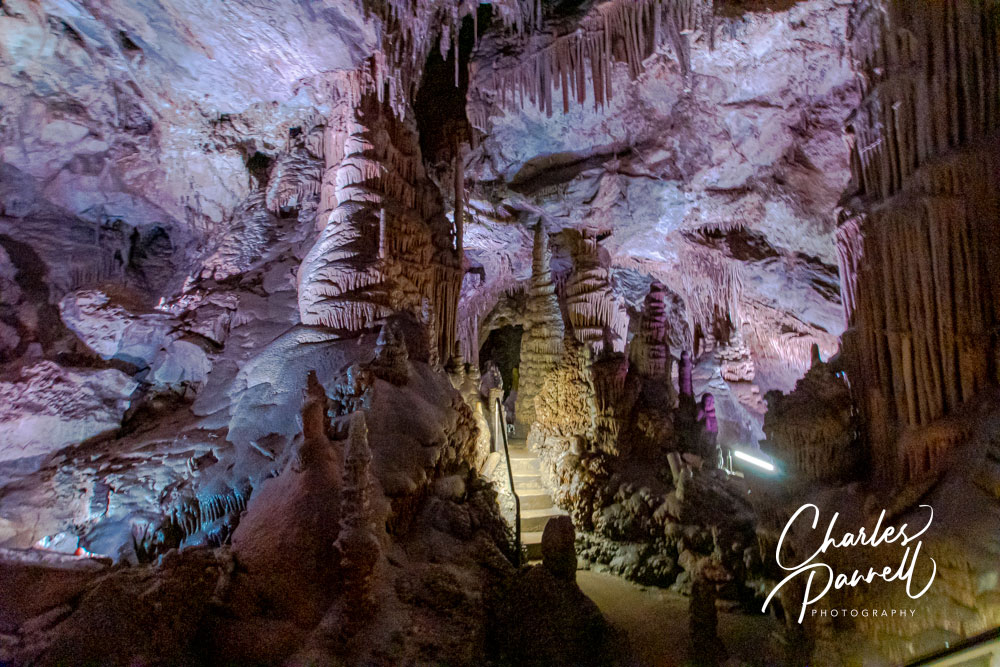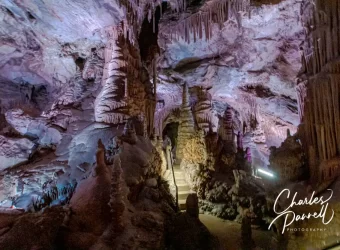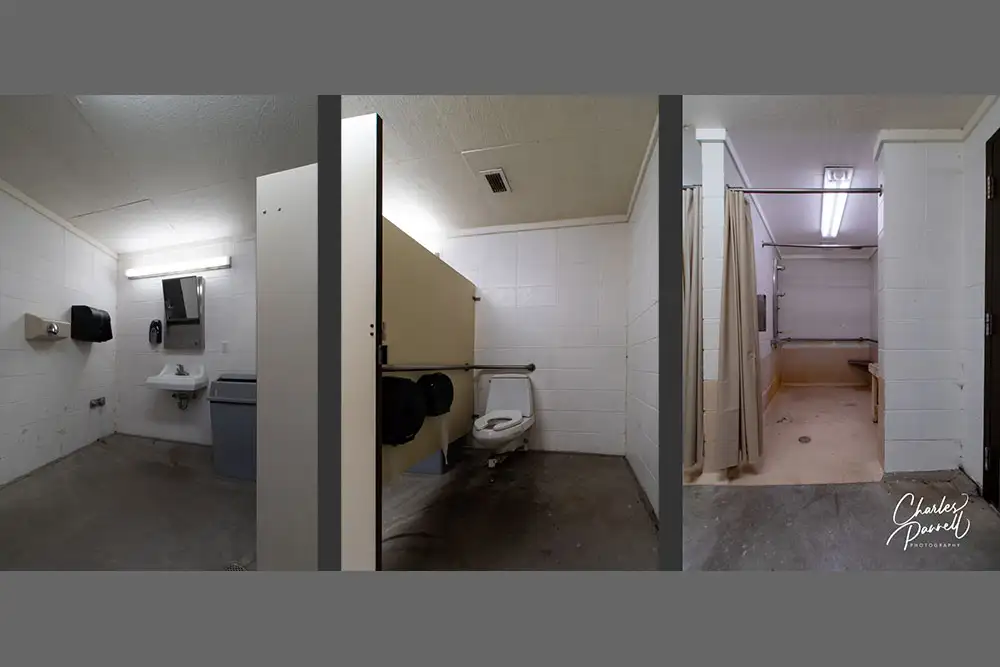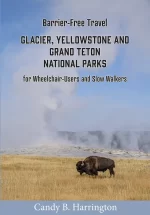Explore Lewis & Clark Caverns State Park

Located near Whitehall, Montana, Lewis & Clark Caverns State Park (fwp.mt.gov/stateparks/lewis-and-clark-caverns/) is named for the famous explorers, even though the closest the duo ever got to their namesake caves was the Jefferson River, some 1,400 feet below. Although the caverns are a definite highlight of the park, visitors can also enjoy the scenic drive up the mountain, and spend the night in a comfortable camping cabin at the park campground. And although caves can be problematic for people with mobility issues, some wheelchair-users and slow walkers may be able to manage a portion of the tour of this 350 million year-old cavern.
Enjoy the Drive
The best place to begin your visit to Lewis & Clark Caverns State Park is at the main visitor center, which is located near the park entrance. There’s accessible parking in the large lot and level access to the building. Inside there’s ample room to maneuver a wheelchair or scooter through the galleries. Pick up a park map and learn a little bit about the geology, flora and fauna in the park.
From the main visitor center it’s about a three-mile drive to the top of the mountain, where the Cave Visitor Center is located. It’s also the starting point for the cavern tours. Take your time to stop along the way to enjoy the view from the numerous pullouts. And even if you don’t have time to stop, there are some great windshield views, going in both directions.
If you’d like to enjoy lunch al fresco, there are also a few options along the drive. The first picnic area is located close to the bottom. It features accessible parking, an accessible vault toilet, and a do-able pathway to some of the closer picnic tables. Up the road, the next picnic area has a level unstriped parking area, and level access over to several picnic tables. The remainder of the tables are located down some steps and over a bridge. And finally, there’s Vista Point. Although there are steps down to the viewing platform, there’s level access over to two shaded tables near the level parking area.
Explore the Caverns
Up at the top of the mountain, there’s accessible parking in front of the visitor center, with ramp access up to it. Built by the Civilian Conservation Corps, the historic stone building is well preserved, and includes the original fireplace. The walls are lined with vintage photos, and there’s also a movie that’s shown throughout the day about the development of the caverns. There’s a cafe and gift shop across the parking lot, with accessible parking nearby.
Cave tour tickets are available at the kiosk next to the visitor center. Tours are only available from May 1 to September 30. Of the tour offerings, the Paradise Tour is the most accessible choice. The 1.5-hour tour requires about a mile of walking or rolling. Unlike the Classic Tour, which includes 600 stairs and a number of tight spaces, this tour is level, with the exception of about 15 steps at the end. The cavern entrance is about a quarter-mile away from the visitor center on a dirt trail covered in crushed granite.
Once inside, a 538-foot tunnel leads over to the Grand Finale Room, which contains an impressive collection of stalactites, stalagmites and columnar formations. Despite the name it’s not the end of the tour, but it’s the farthest that wheelchair-users can go. From there, several staircases with 3-4 steps each lead over to the Paradise Room, which is the official end of the tour. There are railings on the stairs, but the ground is wet. If you can’t do the stairs, you’ll just have to enjoy the Grand Finale Room while the rest of the group visits the Paradise Room. Still the formations are beautiful in the Grand Finale Room, and you can roll around and get a closer look after the crowd moves on.
Spend the Night
If you’d like to spend the night in Lewis & Clark Caverns State Park, there are several accessible campground options. At the top of the list are the three accessible camping cabins. There’s parking on a level cement pad next to the Morrison Cabin, with an accessible pathway to the front door. It’s furnished with a 27-inch high double bed, and a bunk bed with a 19-inch high lower bunk. There’s also a table and four chairs, some clothing hooks, a mirror and a night stand. Outside there’s an accessible picnic table on a cement pad, a standard grill and a water spigot. This cabin also has electricity.
There’s level access to the nearby shower house, which includes an accessible toilet stall with grab bars, and a roll-in shower with grab bars, a lowered control and an accessible pay slot. There’s also a small corner seat in the shower and a slatted bench in the dressing area.
The Smith Cabin and the Woodward Cabin are also accessible, but the Smith Cabin lacks a cement parking space, and both cabins are missing picnic table pads. They are also closer to the other campsites, and lack the privacy of the Morrison Cabin.
Accessible campsite E3 includes a cement parking pad, an accessible table, a raised fire ring and a level tent space. There’s a level sidewalk to the shower house, and it’s the only campsite with electricity. Proof of disability — such as a parking placard — is required to occupy this site.
Finally, the Peregrine Tent is ramped and includes four cots and a small table. There’s also a raised fire ring and a standard table on the grass in front of the unit. It’s not close to the restrooms, and not rated as accessible like the cabins, but it may be doable for some folks.




